Removal Procedure
Warning: Refer to Approved Equipment for Collision Repair Warning in the Preface section.
Warning: Refer to Glass and Sheet Metal Handling Warning in the Preface section.
Warning: Refer to Collision Sectioning Warning in the Preface section.
- Disable the SIR system. Refer to SIR Disabling and Enabling.
- Disconnect the negative battery cable. Refer to Battery Negative Cable Disconnection and Connection.
- Remove all related panels and components.
- Repair as much of the damage as possible to factory specifications. Refer to Dimensions - Body.
- Note the location and remove the sealers and anti-corrosion materials from the repair area, as necessary. Refer to Anti-Corrosion Treatment and Repair.
- Perform additional sectioning procedures as necessary. Refer to the following procedures:
- Cut the panel in the locations where sectioning is to be performed.
- Locate and drill out all factory welds. Note the number and location of the welds for installation of the service part.
- Remove the damaged body side.
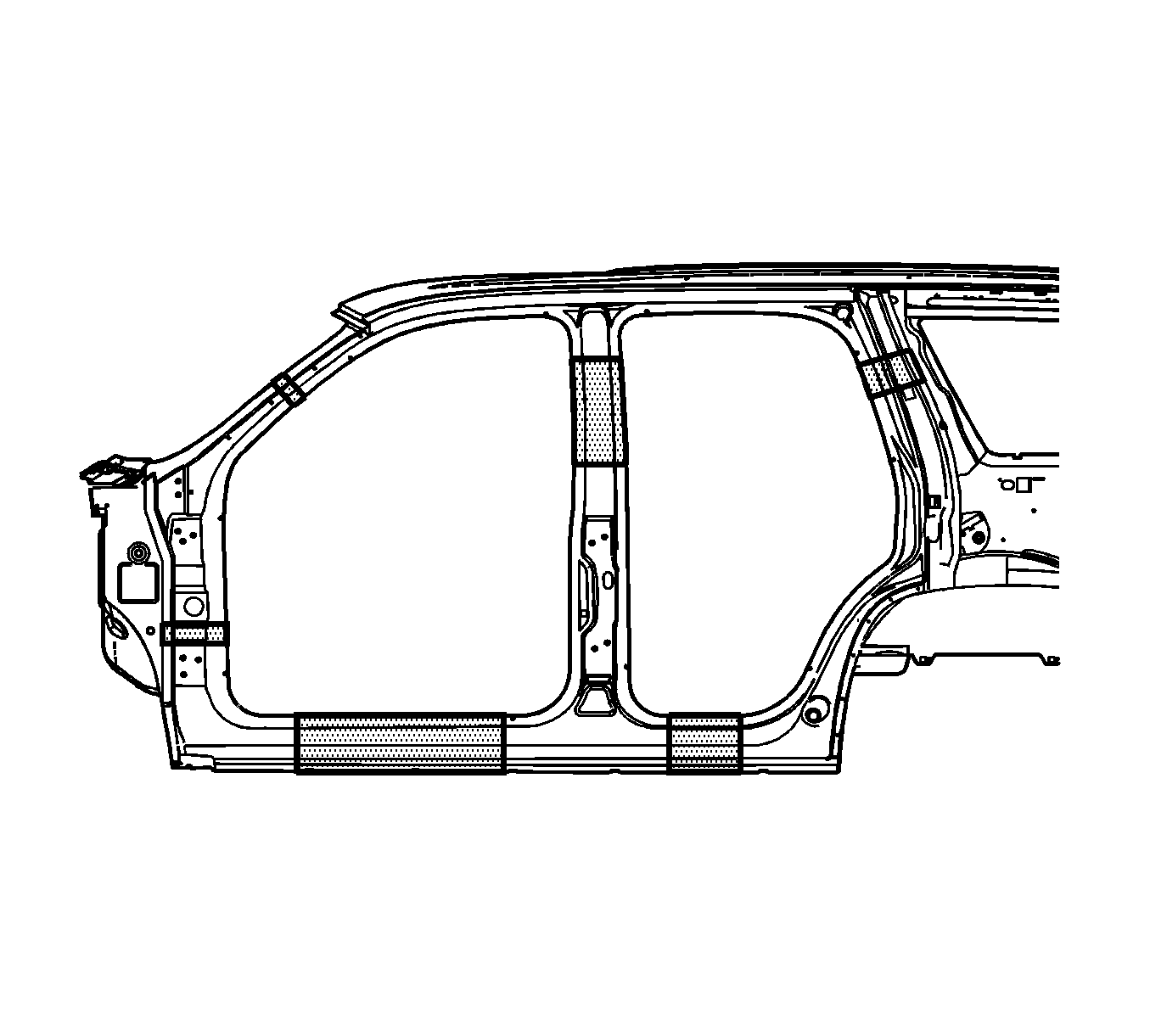
Note: The door frame can be replaced at the factory seams, but requires the removal of the windshield, roof, and quarter panel. The sectioning procedures have been developed as a more cost-effective alternative to complete replacement. The specific area to be sectioned is determined by the extent of the damage to the vehicle.
Warning: Refer to Foam Sound Deadeners Warning in the Preface section.
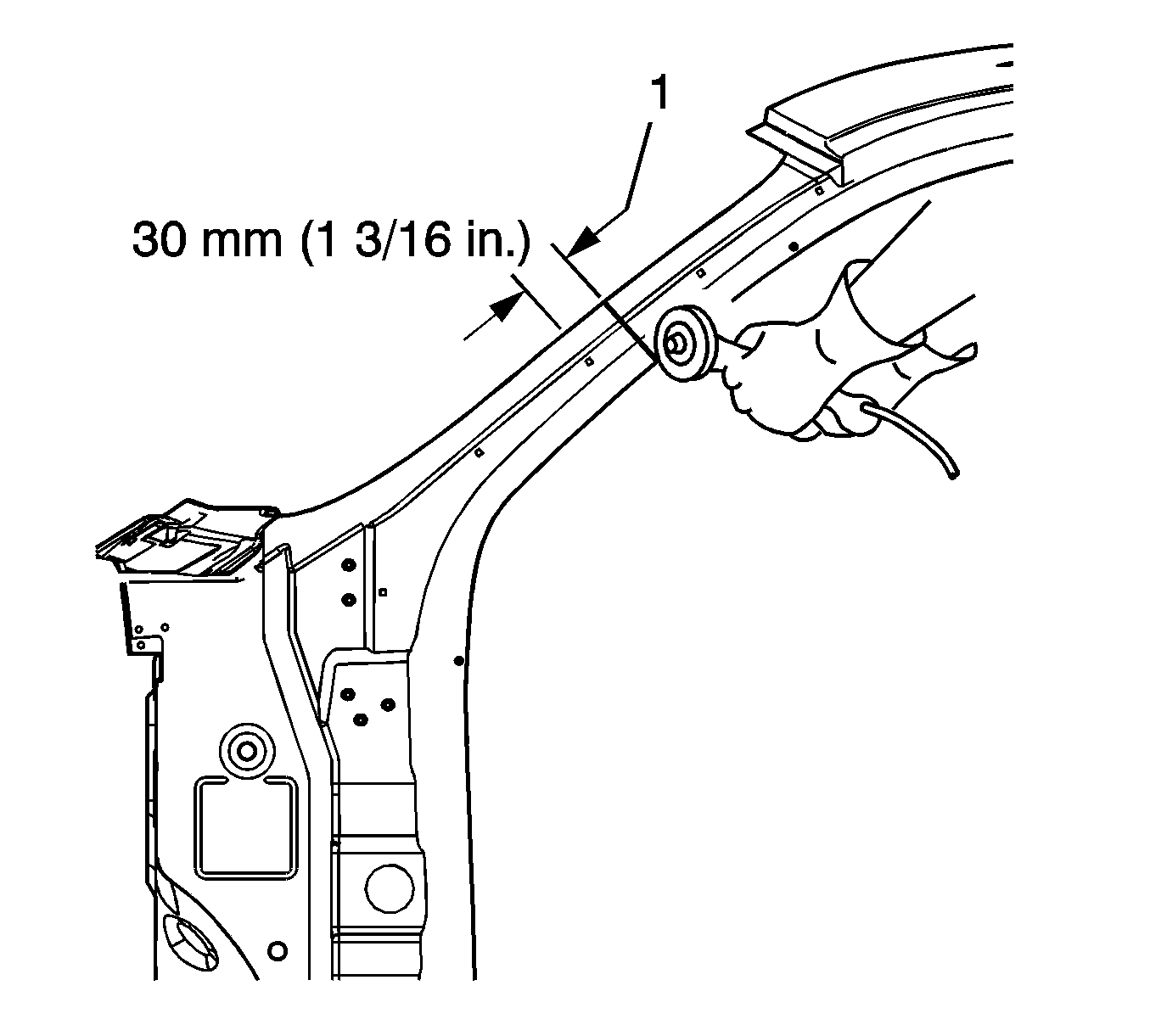
Note: Perform the sectioning in the windshield area 30 mm (1 3/16 in) above the third trim mounting hole (1).
Note: Do not damage any inner panels or reinforcements.
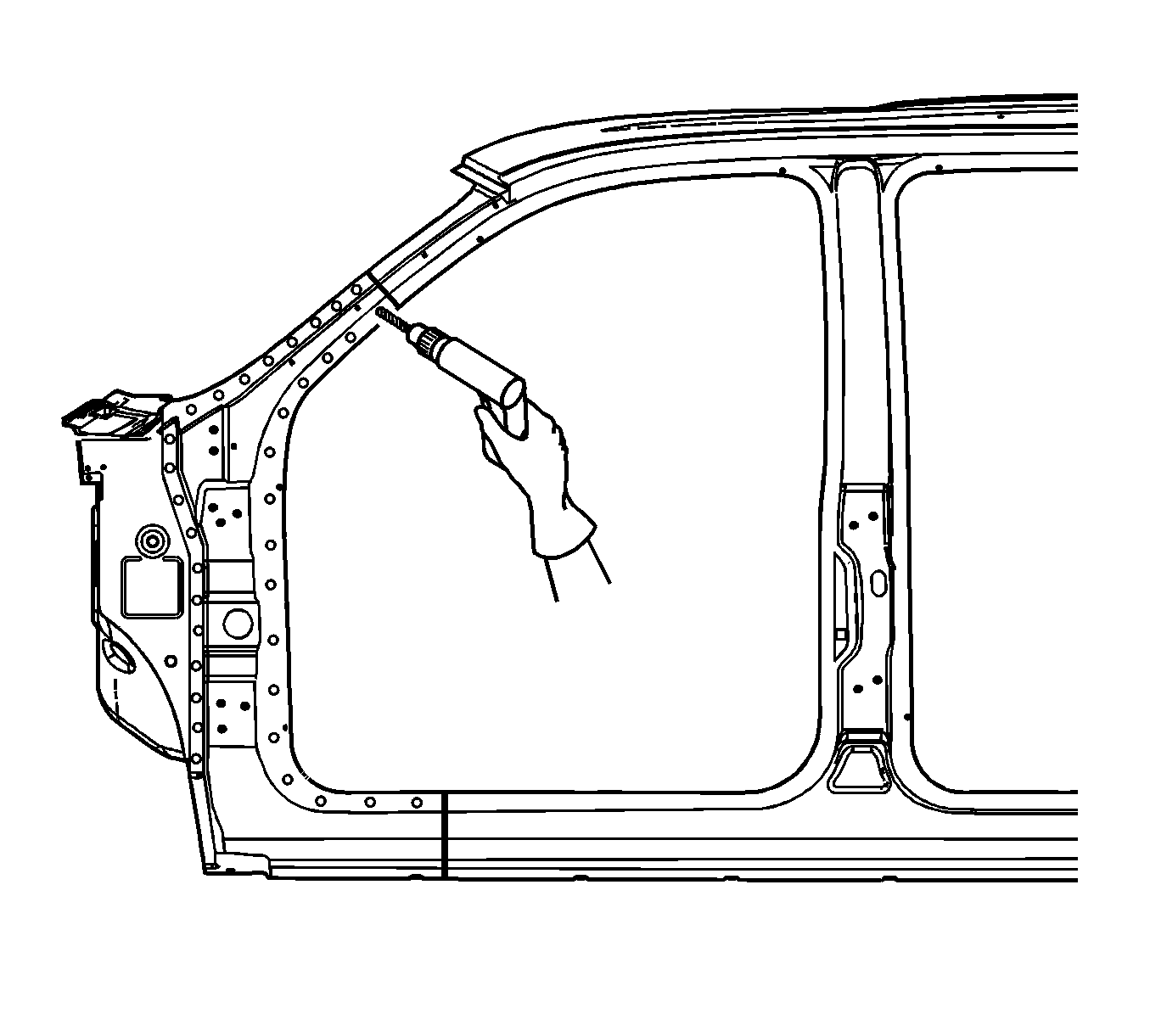
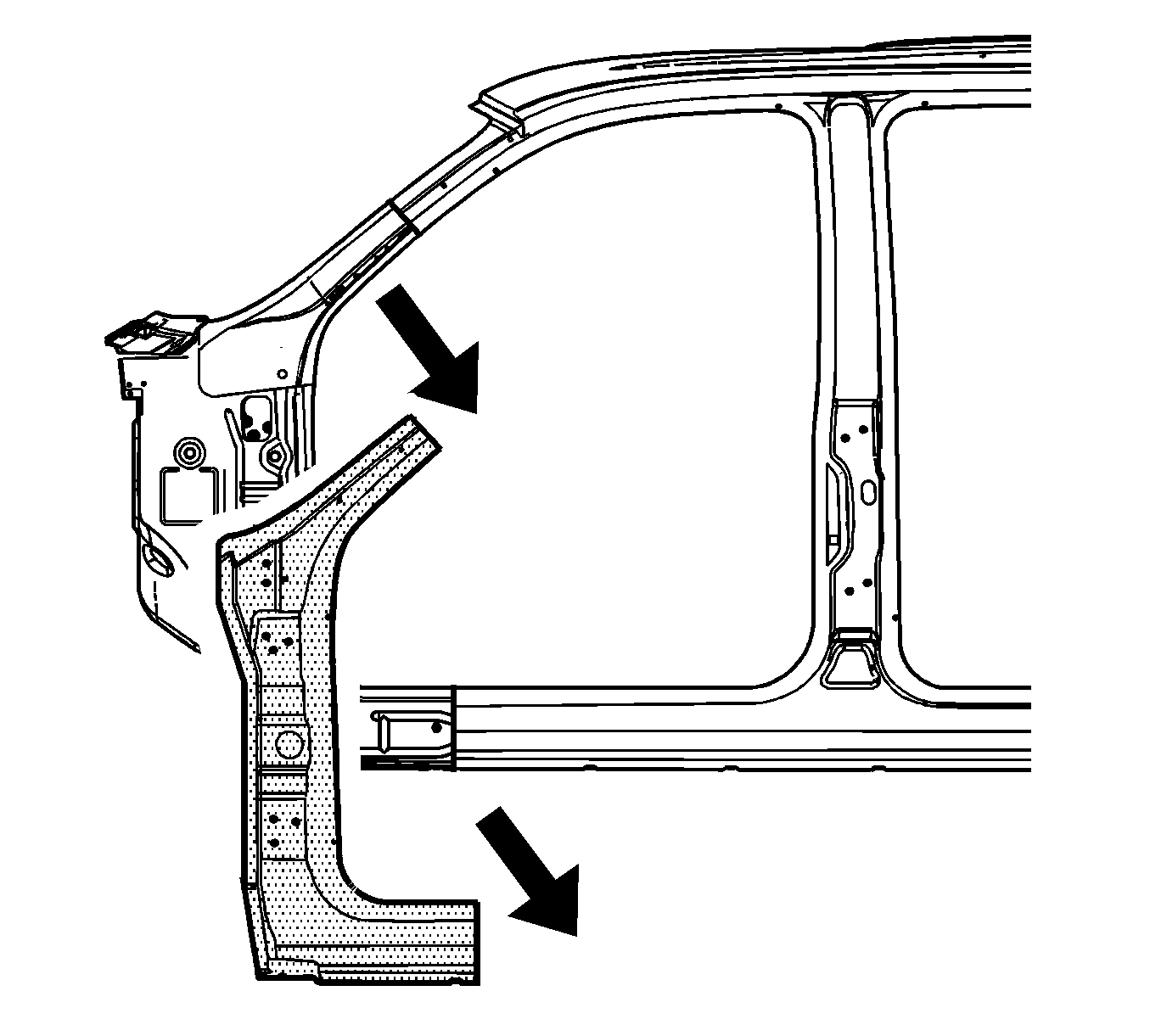
Installation Procedure
- Cut the replacement body side in corresponding locations to fit the remaining original panel. The sectioning joint should be trimmed to allow a gap of 1½ times the metal thickness at the sectioning joint.
- Create a 50 mm (2 in) backing plate from the unused portion of the service part. Trim the backing plate as necessary to fit behind the sectioning joint.
- Drill 8 mm (5/16 in) plug weld holes along the sectioning cut on the remaining original part. Locate these holes approximately 25 mm (1 in) (a) from the edge and spaced 40 mm (1 ½ in) apart.
- Drill 8 mm (5/16 in) plug weld holes in the service part as necessary in the locations noted from the original panel and along the sectioning cut.
- Prepare all attachment surfaces as necessary.
- Apply GM-approved Weld-Thru Coating or equivalent to all mating surfaces. Refer to Anti-Corrosion Treatment and Repair.
- Fit the backing plate (2) halfway into the sectioning joint, clamp and plug weld to the vehicle (3).
- Position the body side to the vehicle using 3-dimensional measuring equipment. Clamp in place.
- Use 3-dimensional measuring equipment to position the body side to the vehicle. Clamp in place.
- Plug weld accordingly.
- Clean and prepare all welded surfaces.
- Apply the sealers and anti-corrosion materials to the repair area, as necessary. Refer to Anti-Corrosion Treatment and Repair.
- Paint the repair area. Refer to Basecoat/Clearcoat Paint Systems.
- Install all related panels and components.
- Connect the negative battery cable. Refer to Battery Negative Cable Disconnection and Connection.
- Enable the SIR system. Refer to SIR Disabling and Enabling.
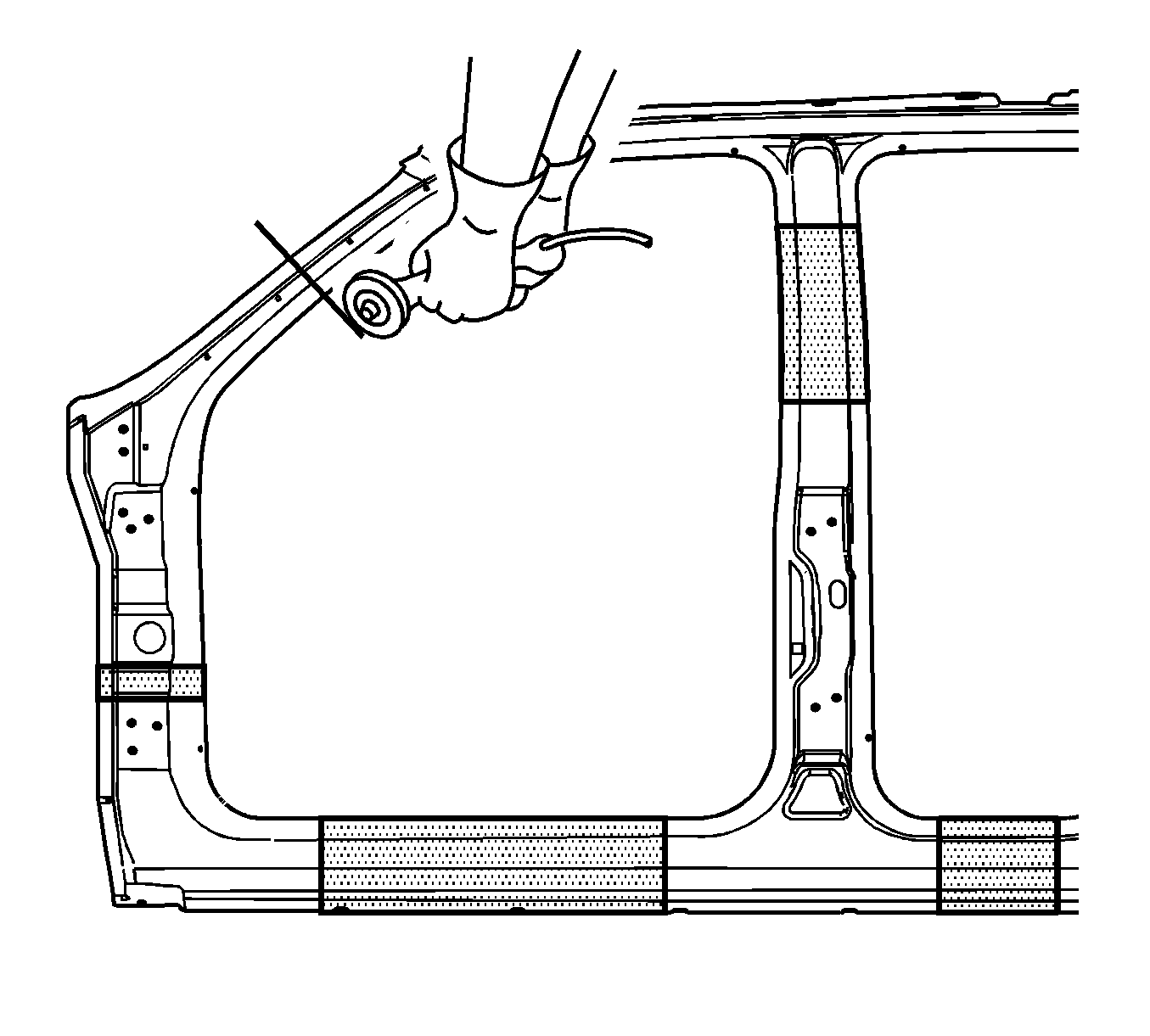
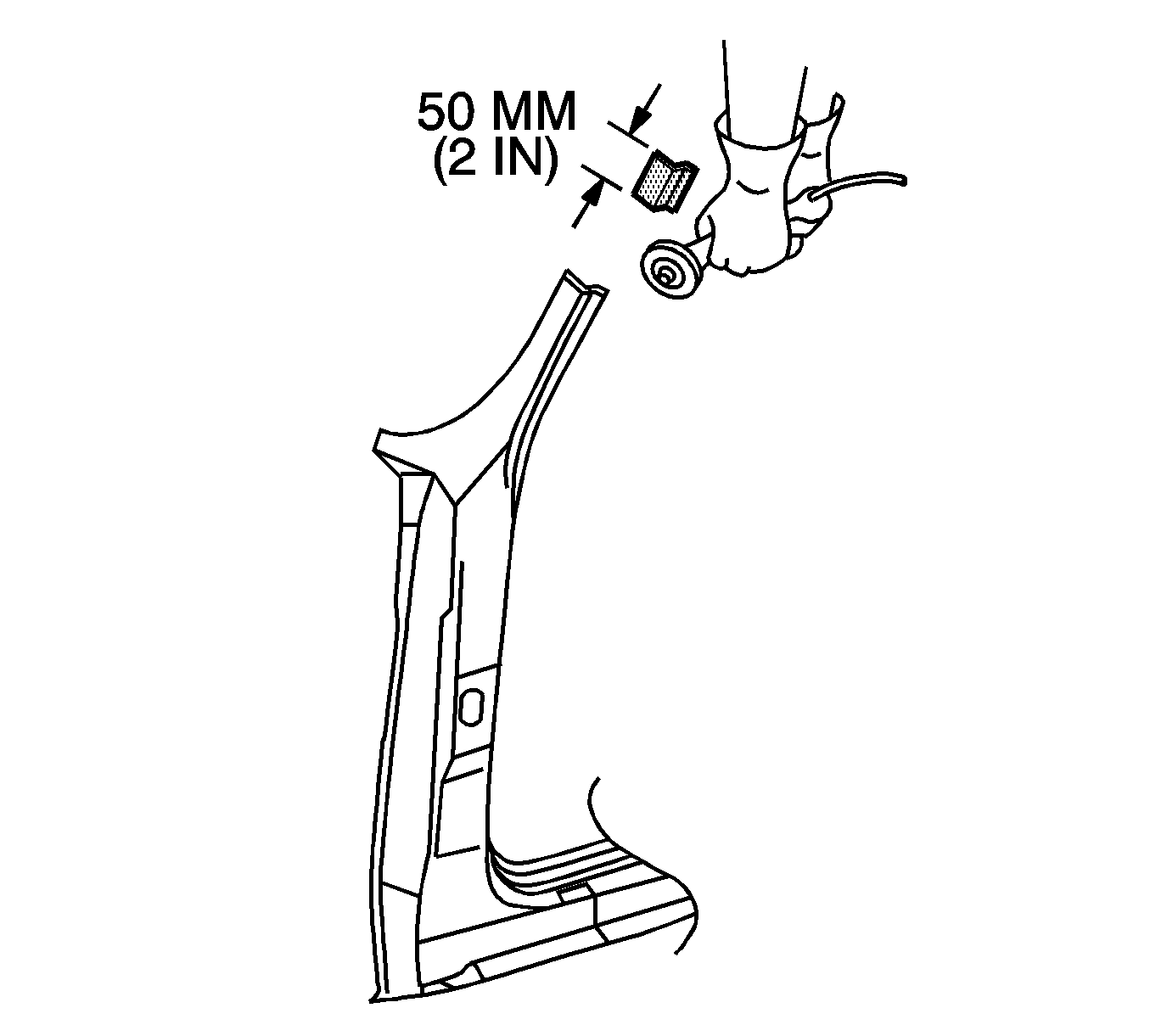
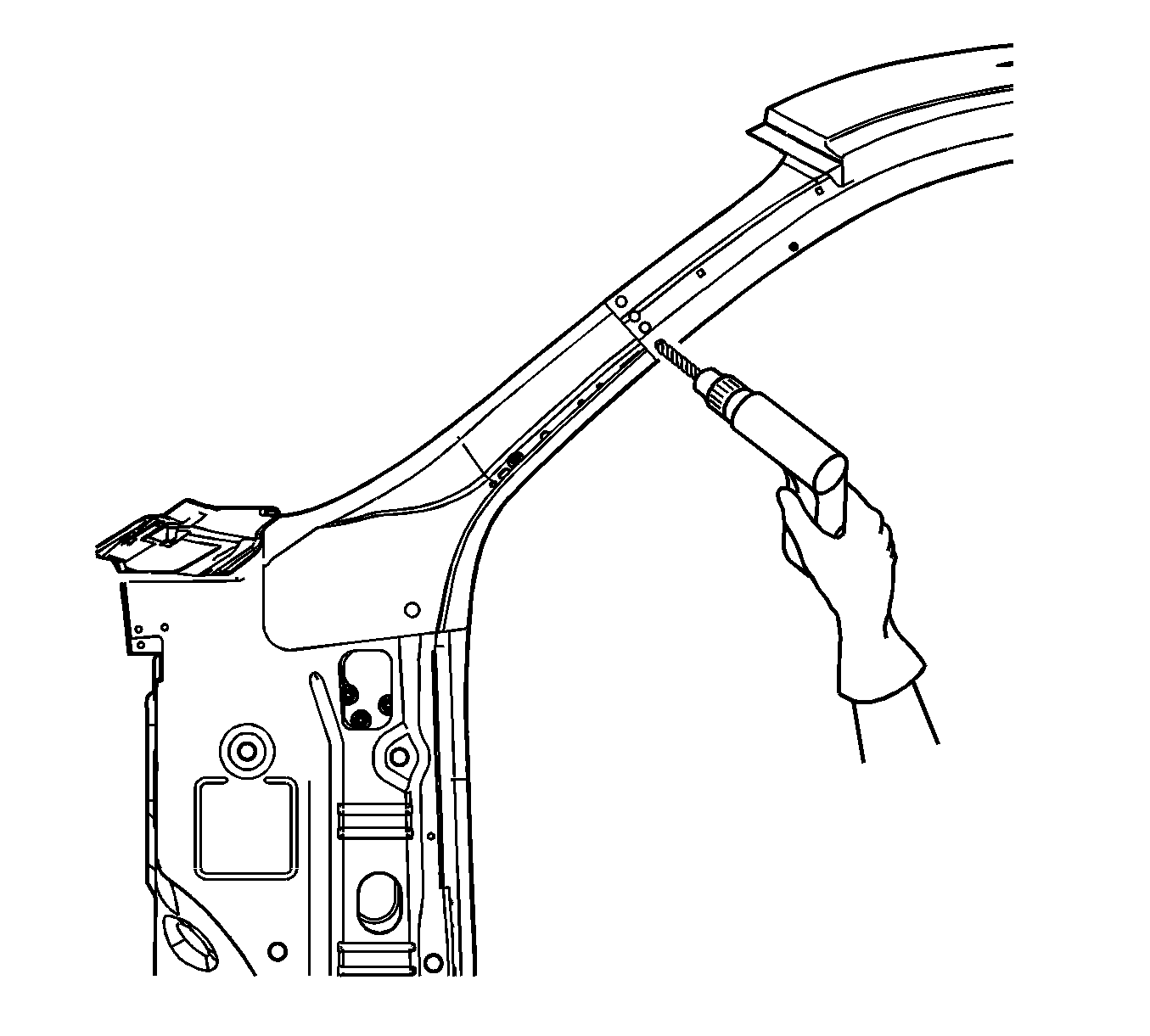
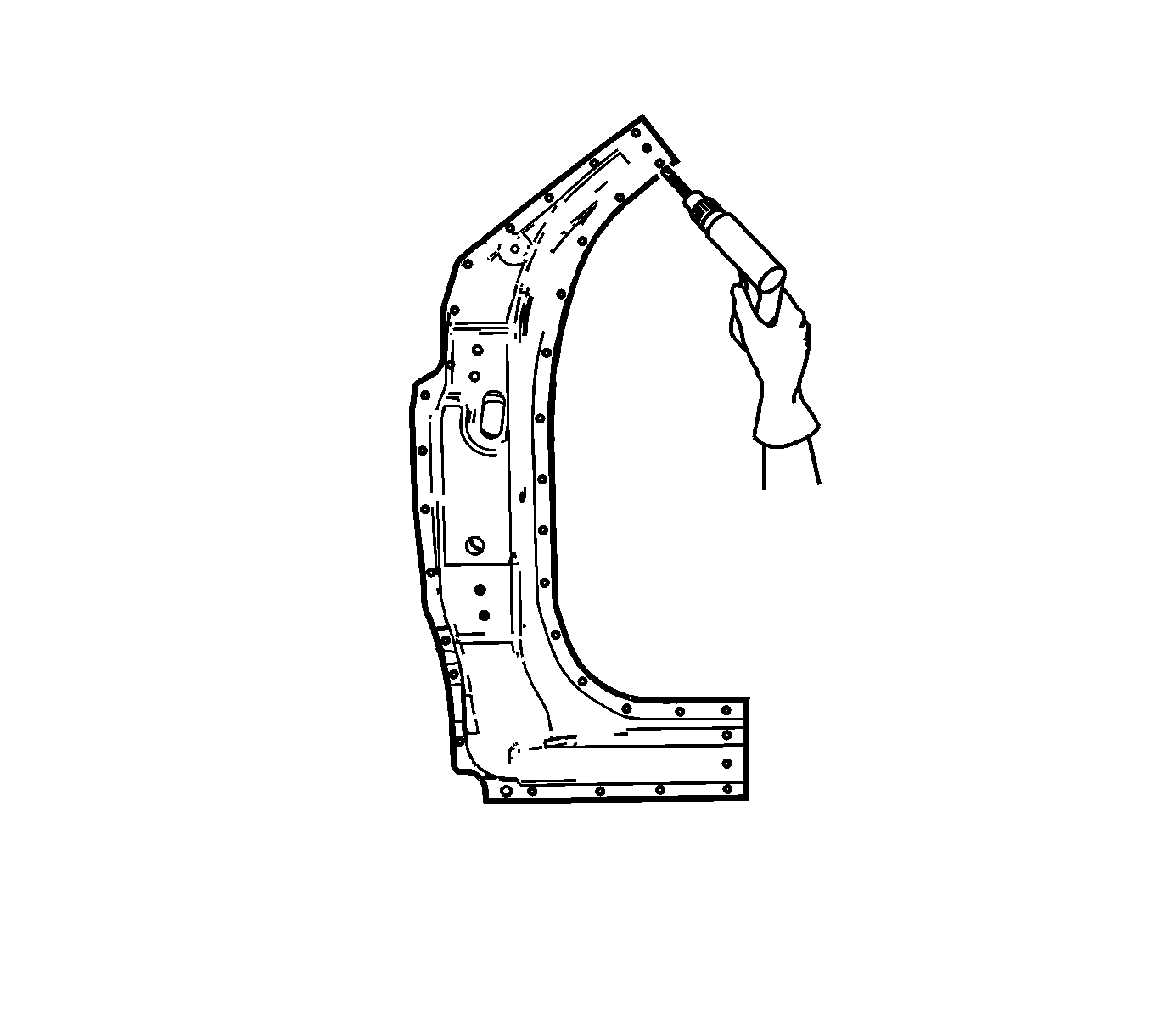
Note: If the location of the original plug weld holes can not be determined, or if structural weld-thru adhesive was present, space the plug weld holes every 40 mm (1 1/2 in) apart.
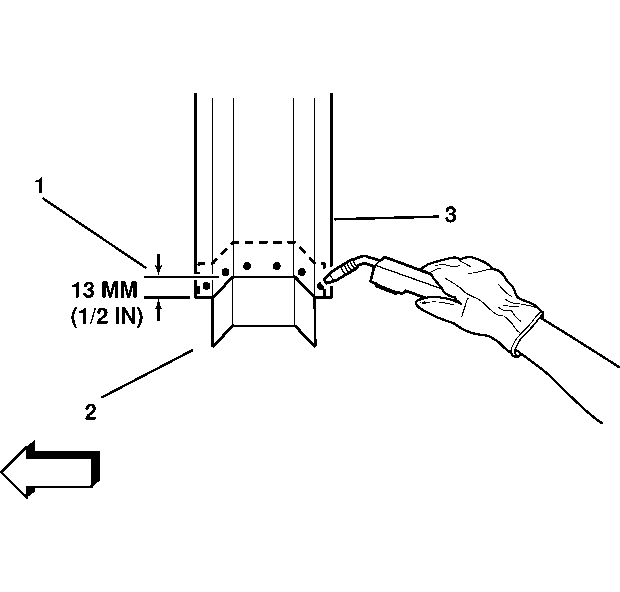
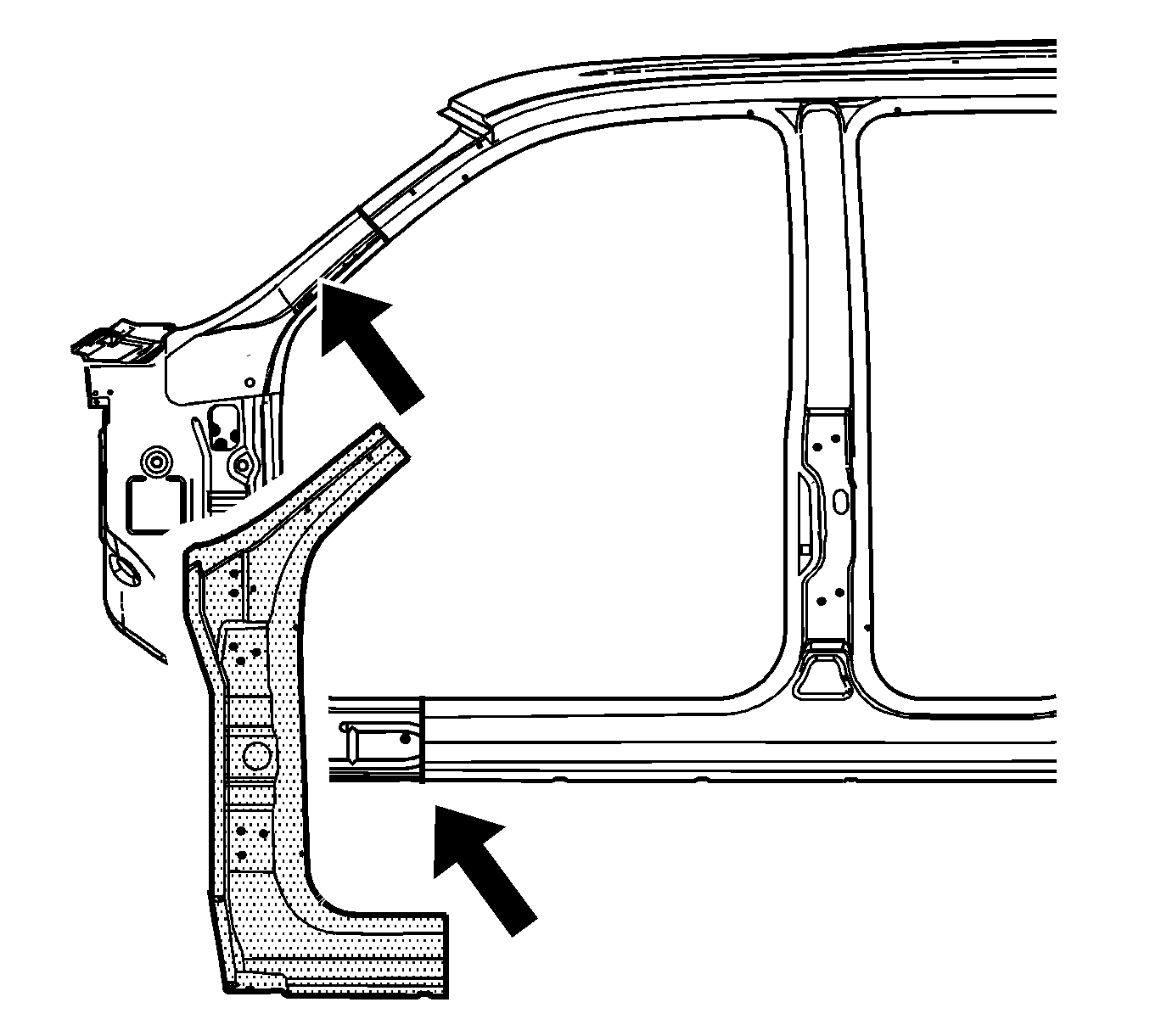

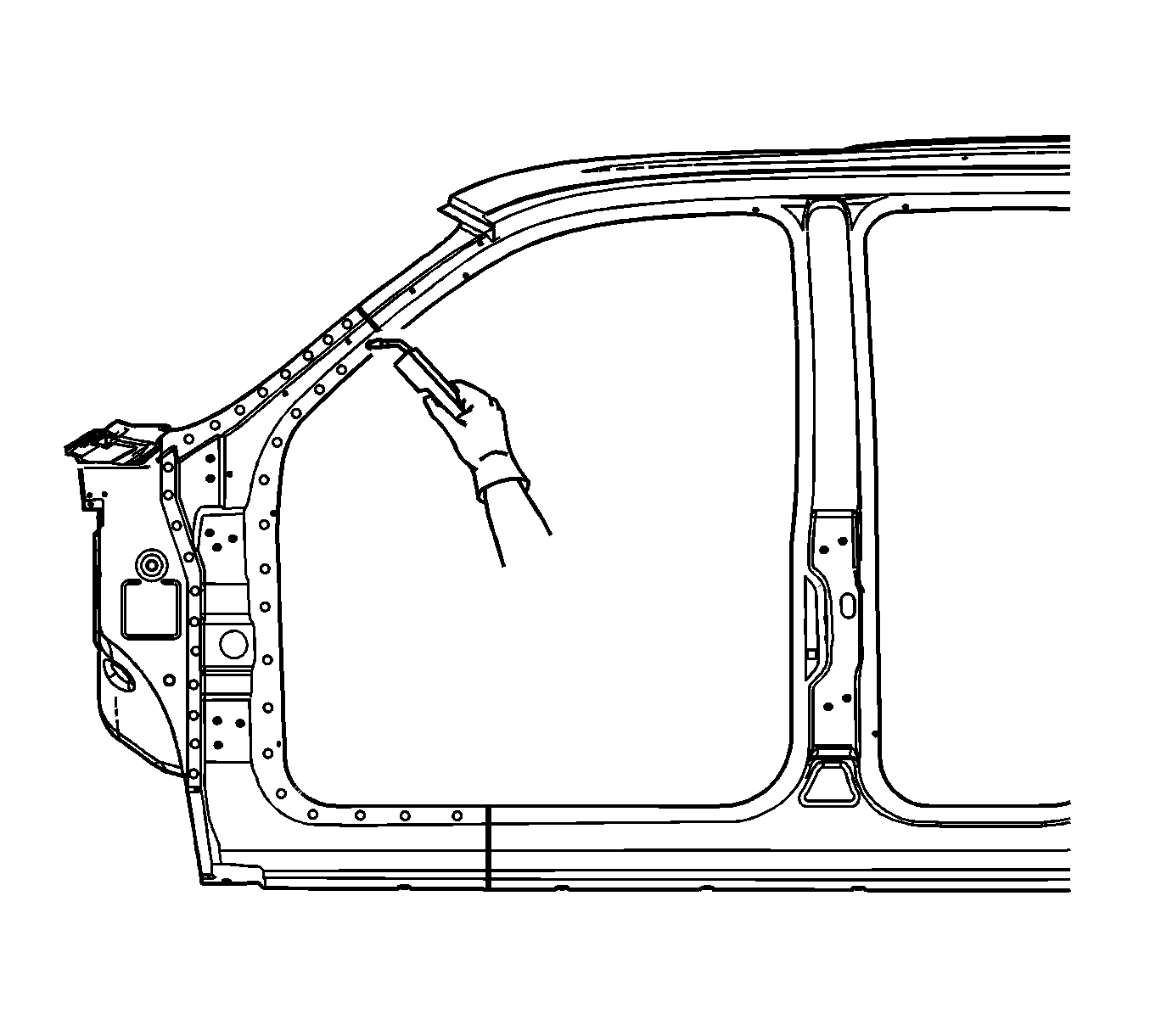
Note: To create a solid weld with minimum heat distortion, make 25 mm (1 in) stitch welds along the seam with 25 mm (1 in) gaps between them. Complete the stitch weld.
